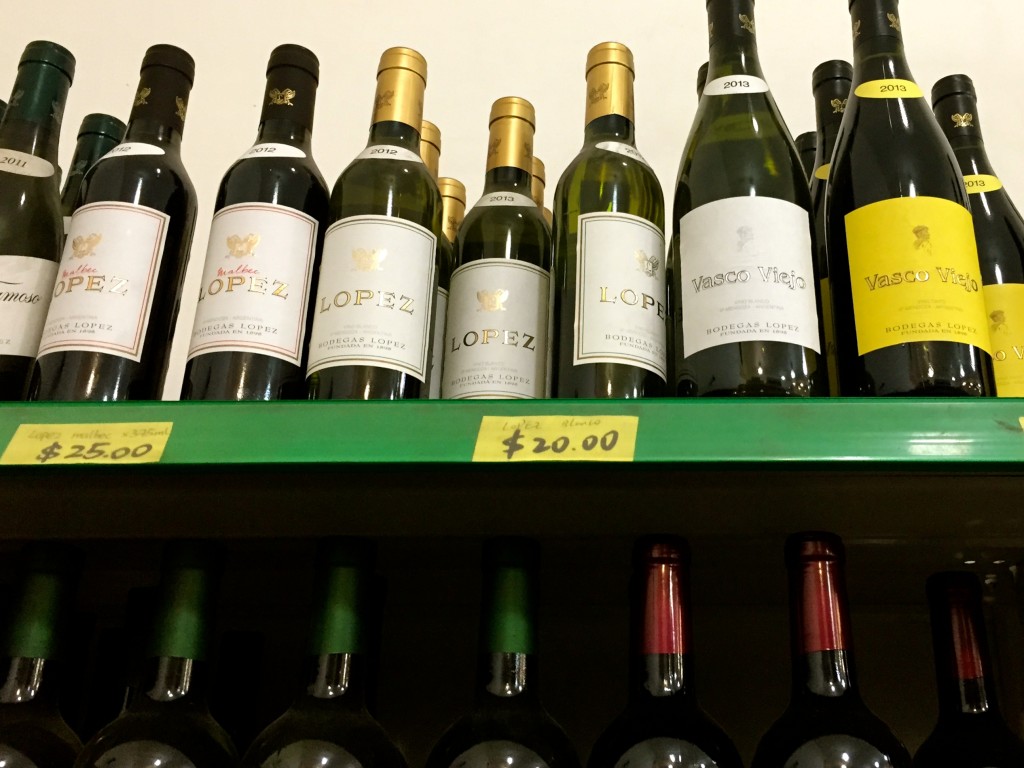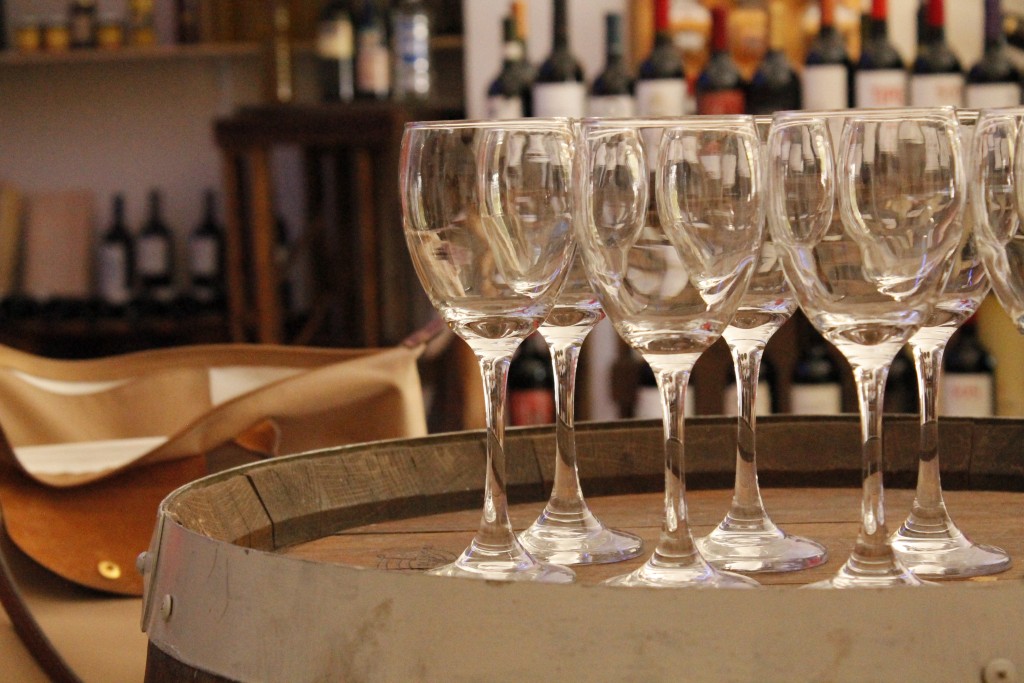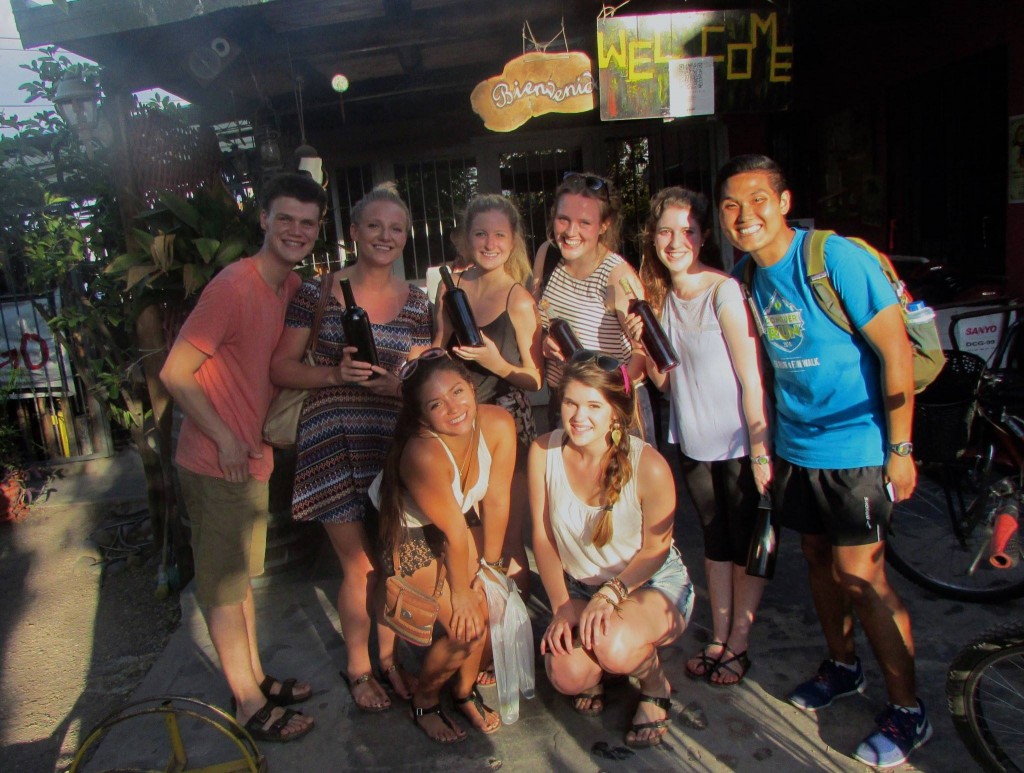Argentina has captured me in quite a few ways so far. Its influential artists and writers such as Antonio Berni and Silvina Ocampo; the musical, hyperbolic, Italian influenced dialect of Castellano; and the cheap but delicious assortment of empanadas that are always available at any self-respecting Porteno restaurant. The single aspect that has seduced me most, however, is the wine.
Here, and somewhat to my disdain, there as no such thing as a 5-liter box of Franzia Chillable Red or Sunset Blush. Abandoned are my nights of binging on fruity psuedo-vino, pretending to be camper-chique by drinking out of my decorated wolf mug and cheers-ing with everyone who wisely prefers to drink beer (we have fun at the University of Minnesota). No, the Argentines class it up quite a bit.
The wine industry here thrives locally and internationally, with malbecs and cabernets and everything in between produced primarily in the wine region called Mendoza. It is world-class, but for the Argentine resident, that does not mean expensive. On the contrary, for every box of Franz I would purchase back home, I could probably buy 6 or 7 bottles of rich Mendoza vino at as low as 20 pesos (~2USD) at any local grocery store.

The first time I giddily took advantage of this steal for a park outing one afternoon, I was pleasantly disappointed at the fact that I had to spend quite a few extra pesos after forgetting to bring a bottle opener on the trip. However, I can now open up wine to my heart’s content.
The obsession is real, and on the first 5-day weekend we were allotted from school, some friends and I took a 15-hour overnight bus ride to the quaint, cozy, college-town sized city of Mendoza, Argentina to get a behind-the-scenes look at where our beloved vino tinto is coming from.
After a brutally long and cold bus ride and bone-tired day of wandering the town, we returned to our hostel, Hostel Mora, at a shamefully early hour to make food, rest, and sample a glass of the hostel’s free house wine, which most hostels and B&B’s offer nightly or upon arrival. This turned into a courtyard gathering with new friends from all over the world, and ended with a hard hit to the pillow at 4am and a difficult alarm-sounded awakening at 8. Nevertheless, we were all thoroughly excited for our winery trip. We snagged a Mendoza bus card from our new friends who were heading out that afternoon, bid them adieu, and made a quick half-hour trip to the smaller neighboring town of Maipu.
We chose not to do a wine tour in the actual city of Mendoza because 1. we were all traveling on a student budget and couldn’t afford the exorbitant all-inclusive options, 2. none of us actually knew anything about wine, wine-making, or wine-tasting and did not want to appear the annoying novice on a mini-bus with wealthy snowbird tourists, and 3. we had been living in Buenos Aires for over three weeks and were all itching to get out in the fresh air and try our hand at biking without having to worry about the collectivos (Buenos Aires city busses) or ravaging motorists that plunder the streets day-in and day-out.
We got off the bus in Maipu across the street from Mr. Hugo’s bike rental shop and were greeted by the lovely Mr. Hugo himself. There were 8 of us on the tour, and there were plenty of bikes available for all shapes and sizes. Mr. Hugo kindly offered us free water bottles and valuable coupons to many of the wine bodegas along the route. We were also given a map, albeit it was not a very accurate or scaled one, but Mr. Hugo circled the places we should try to visit and gave us some great recommendations. It took a few minutes for a some of us (me) to remember how to ride a bike, but soon we were off to La Botella.

Although this was not a bodega, La Botella was a fabulous first stop and helpful preview into the world of fancy wine tasting. Impossible to miss with a giant blue wine bottle sitting out front, we pulled in and parked our bikes at the strategically placed bike corral and were greeted by the owner. The eight of us gathered around a large booth and barrel and were served four different wines after learning to sniff, swish, and aerate the liquid and talk about the aromas we were sensing. He also gave us a sampling of a complimentary dessert wine, all of which went fabulously with the 5 peso empanadas that were fresh out of the oven (cheapest empanadas I have seen so far in AR!). Extremely grateful for our new oenelogic intelligence, we headed to our next stop; but not before he gave us four free bottles to split between the eight of us, #blessed.
We biked along the main street, Urquiza, toting full wine bottles in our bicycle baskets, wobbling excitedly along the two-wheel lane in single file. The next few stops were to an olive oilery (terminology?) and a beer garden, and we unfortunately lost bit of time trying to find Tupiche, supposedly one of the most famous wine bodegas, only to find that it was closed. We sped along on our bikes for a little too long until we found a final winery umpteen kilometers down the road from Mr. Hugo’s. It was about 6:15 when we arrived and the bikes needed to be back by 7.
The map made things appear extremely close in distance, but beware that it lacked was sheer accuracy and details such as in-between streets, but luckily our group was having such an adventurous afternoon that the long rides weren’t phasing us. After trying a few more wines and hardly having the nerve to aerate yet another flavor (they were all beginning to taste the same to me), we headed back late to Mr. Hugo’s, only to be greeted by his friendly, radiant smile and full glasses of pineapple juice to go around. We snapped a few pictures and then headed back to the bus stop to Mendoza, but not before Mr. Hugo handed us two more free bottles of wine.

In total, we each spent about 300 pesos, or 30USD for a 7-hour self guided wine tour. Each location had a cover charge ranging 30-65 pesos, but in most cases the samples given to us were either unlimited or so large that there was no room for seconds. And when you factor in the 6 free bottles, it was less than some of us would have spent on a night out in Buenos Aires, not to mention the amazing, hilarious memories that were made.
We arrived back in town, had dinner, and hit the pillows; plagued by our body’s shock from biking tens of kilometers mixed with sugary day-drinking and over-exposure to sunshine. Not-so-early the next day we arose in mid-afternoon to purchase bus tickets to the Andean town of Potrerillos, a lake village that didn’t show up in any of my guidebooks and whose discovery is entirely attributed to my friend Emmaray, who insisted that it would be a must-see and without any other plans, we all accompanied her.
Interested in a fantastic off-the beaten path adventure outside of Mendoza? Read about Potrerillos and its incredible lagoon!

Well, what a great way of spending your day at Mendoza Argentina. You'll definitely love how they make their marvelous wines here at Argentina. When it comes to wines, they really know their thing, making it more delightful for all who taste it. Enjoying your day at Mendoza Argentina will be very fun.
Argentina is indeed a good place for wine tasting because it's one of those countries with great variety and choices of wines. I am a wine lover myself and Argentina is in my list of place to visit soon because of their wines.